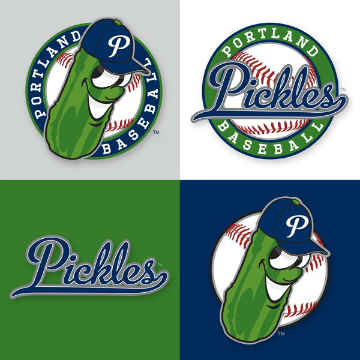An urban farm in Salem grows vegetables, flowers, and cans pickles on the side
By Gillian O’Callaghan – Boston Globe
SALEM — Maitland Mountain Farm, this city’s only urban farm, is a bit of a conundrum. How can there be a farm and a mountain in this seaside city with almost 5,000 residents per square mile?
Carved out of a residential neighborhood, the farm is perched on a 2½-acre lot not far from a Staples and Dunkin’ Donuts. The name came from a family friend of Peter Maitland, who with his wife, Barbara, raised four children on this property. The friend used to ride his bike up the steep hill to visit and after struggling each time to navigate the incline, he dubbed the spot “Maitland Mountain.”
For the past six years, the Maitlands’ daughter Holly, 33, and her husband, Andy Varela, 30, have been growing a host of farmers’ market vegetables and testing the appeal of others. Kohlrabi was a successful experiment, though it took some convincing for skeptical shoppers to try the odd-looking orb. The farm is not organic, but on rare occasions uses organic insecticides. “This year we haven’t sprayed anything,” says Varela. If you grow what’s in season, he says, there’s little need for fighting pests.
Making a living from a small farm is difficult, so the duo developed two big additional income sources: sweet-smelling flowers and sour-tasting pickles. Until the end of October, the farm will deliver 40 to 50 bouquets a week to local florists, as well as a weekly flower share to Farm Direct Coop, a North Shore CSA. The mainstays are more than 40 varieties of dahlias, which are paired with zinnias, celosia, lemon basil, or amaranth.
And then there are the pickles. “I have always been a pickle lover at heart,” says Holly Maitland. One year, her father grew a “plethora of pickling cucumbers.” She tried a couple recipes for quick refrigerator pickles. “They came out so good that I was hoarding them for myself.”
When Varela moved to the farm and tried them he said, “You’ve got to do something with this.” That summer, they were selling pickles at farmers’ markets, and within two years had a contract with Costa Fruit & Produce of Charlestown to distribute pickled products and horseradish to kitchens across New England. “It’s helping us make it through the winter,” says Maitland. To keep up with demand, they buy cucumbers from neighboring farms and other places. A cold-brine method keeps the vegetables crisp and crunchy. Jett’s Spears are mild, and Holly’s Spears are spicy. Peter’s Giardiniera, a mix of carrots, cucumbers, cauliflower, celery, and peppers, in a briny concoction of spices, has plenty of garlic and red chile flakes.
Peter Maitland and his brother, Greg, built the house on this property. Now Holly and Varela, and their 3-year-old son Jett (the same Jett of the mild pickles), live here with Peter and Barbara. Peter, a retired merchant marine engineer, always had an extensive garden and raised chickens.
Holly moved home after finishing Massachusetts College of Art and Design and started working for a landscape design company. In 2009, the year the Salem farmers’ market launched, the father-daughter duo tried a small stand with eggs, vegetables, and flowers, and the farm has been expanding ever since.
She and Varela met on eHarmony, drawn together by shared careers in the food industry. Within five months, Varela, originally from Southern California, arrived in Salem from Montauk, N.Y., where he was working in a restaurant. He quickly embraced the role of family farmer. As relatively new growers, the two have learned by trial and error. “It’s not what you know about farming,” says Varela, “it’s about how much work you want to put in.”
They find support among fellow farmers and restaurants they supply. The Sea Level Oyster Bar on Salem Harbor offers Maitland’s spicy pickle chips, fried to a crisp and served with chipotle dipping sauce. “They are great pickles to start with. And then you add that they are local, and made right in Salem, you can’t get better than that,” says culinary director Serie Keezer, who also oversees Finz Seafood & Grill on the harbor.
The pickles are also at Milk & Honey Green Grocer in Salem. “It’s great to be able to offer customers products that come right from their own town,” says owner Sharon Driscoll. She’s had customers so enamored of Holly’s Spears that they’ve wiped out her entire stock in one purchase.
And, no, the young farmers never get sick of pickles. Varela likes to dice them, and, with a generous splash of brine, make a pickle guacamole. And Maitland, the original pickle lover, dips her spicy spears in hummus.
They’ve built a very sweet and sour life atop Maitland Mountain.
Maitland Mountain Farm pickles available at Milk & Honey Green Grocer, 32 Church St., Salem, 978-744-6639; The Corner Butcher Shop, 240 Elliott St., Beverly, 978-969-3194; Willow Rest, 1 Holly St., Gloucester, 978-283-2417; Appleton Farms Dairy Store, 209 Country Road, Ipswich, 978-356-3825; Appleton Farms at Boston Public Market, 100 Hanover St., Boston. Flowers, produce, and pickles available through Oct. 22 at the Salem farmers’ market in Derby Square on Thursdays.
Gillian O’Callaghan can be reached at gillian.ocallaghan@globe.com.



